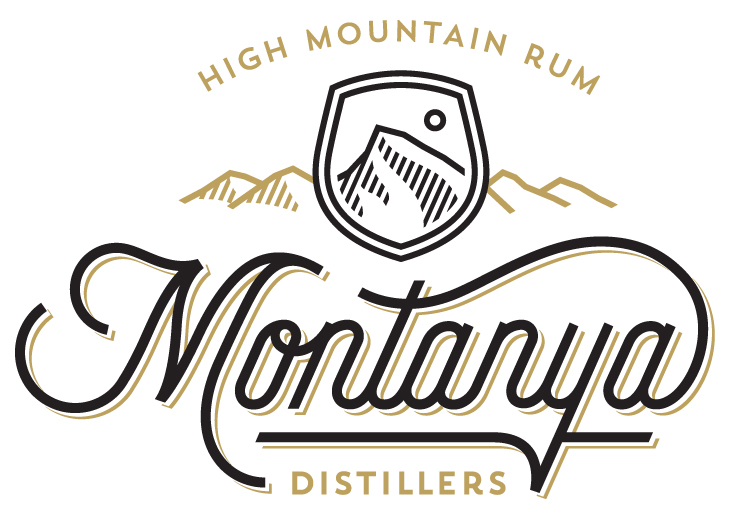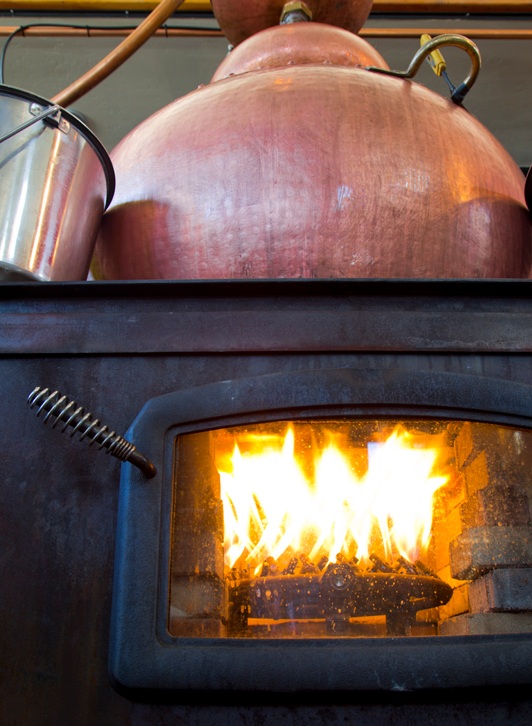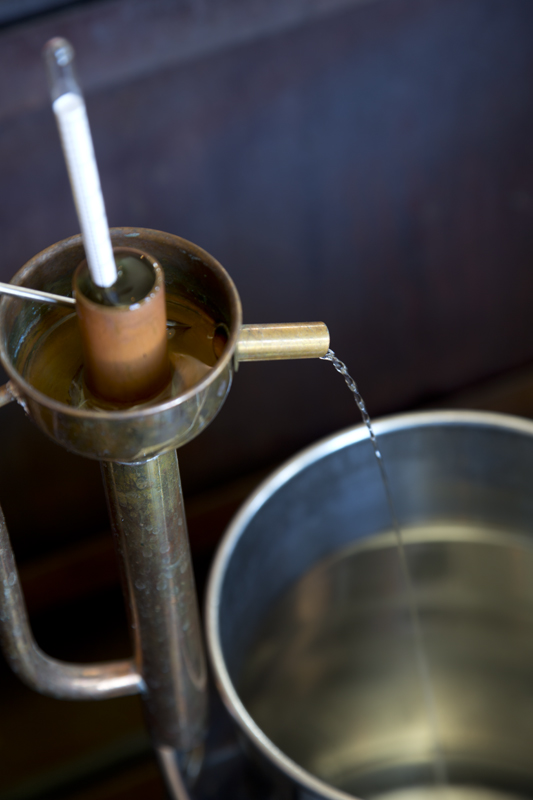A Closer Look at the Rum Distillation Process
How to Distill Rum: The Basics
Rum distillation is a combination of science and art. At Montanya Distillers, we ferment just four ingredients: raw unrefined cane sugar, unrefined molasses, yeast and Colorado mountain water.
After five to six days in fermentation, the resulting “wash” is transferred to our 500-gal pot still, where the liquid is heated to separate the alcohols. The still converts the alcohols to vapor form and then returns it to liquid through a condenser. The purest part is then aged in American White Oak barrels with a #3 or #4 char that previously held Laws Whiskey made in Colorado.
Batch distilling and efficiency allow us to meet all of our production needs with a single 500-gal pot still running 4 days a week.
The fermentation tanks at Montanya Distillers.
Our Rum Stills
We like tradition at Montanya Distillers, so we use a 100% copper pot still made by Bridgetown Brew Systems in Oregon. Everything we make starts in these stills—whether it’s rum for the tasting room and bar, or rum that we ship around the US or to Europe.
Montanya Rum Distilling Rum By the Numbers
At Montanya Distillers, each batch of rum requires:
About 1,100 pounds of raw, unrefined cane sugar
132 of unrefined, black strap molasses
370 gallons of water
5 to 6 days of fermentation
Each batch yields:
A wash that’s about 16 percent alcohol by volume
50 - 60 gallons of un-aged rum (called hearts, which we explain below) per still per run
And each barrel:
Fits 53 gallons of rum
Weighs 500 to 550 pounds
The still heats the wash to separate the alcohol from the rest of the liquid.
The Distillation Process: Specifics
If you tour the distillery, you’ll hear a few terms getting tossed around: heads, hearts and tails. We’re not talking about body parts. These are industry terms meant to refer to the different parts of the alcohol run produced through distilling.
Once the wash has been transferred from the fermentation tanks to the stills, the distiller brings it up to a slow heat to vaporize the ethanol. That vapor then goes through a condenser, where the alcohol is turned back into a liquid and comes out of the still as rum. Only the lightest and purest vapors escape the still.
Alcohol coming off of the still.
As the temperature increases, different forms of alcohol are produced. We want only the purest alcohol and flavors to make our rum, so we make “cuts” between the different types of alcohol. It’s really just the point at which the alcohol transitions from one phase to the next.
For example, early in the process, lower temperatures produce alcohols like volatile alcohols, ketones and esters. These alcohols that we don’t want are referred to as the “heads.” As the process continues, we reach purer ethanol. It has all the concentrated flavors that the yeast created during fermentation, and it’s the part of the rum that we want to barrel and age. This is called the “hearts.”
Eventually, the boiling point in the still gets closer to the boiling point of water. The percentage of alcohol goes down and the water content goes up. This is what we call the “tails.” We don’t put the tails in the barrels, but they do possess some flavors we like. They go back into the stills to be redistilled several more times to extract their best flavors (the transition between the hearts and tails is often called the Queen’s Share in rum production, since so many great flavors live in this transition.)
Montanya Distillers ages its rum in barrels that previously held Laws Colorado Whiskey.
Aging Rum
Many factors influence the way a rum ages, like the length of time it ages, the type of barrel, the char on the barrel, and even the altitude, humidity and temperature in the rack house. We age in ex- whiskey barrels from Laws Whiskey House in Colorado to add additional character, and each rum has a distinct aging process to help cultivate its flavors.
You Might Also Like:
“Employee” Profile: Meet Bellatrix and Bellisima (an inside look at our stills’ quirky personalities)




